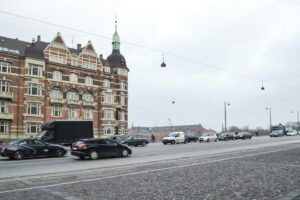Building Affordable Homes – Challenges and solutions in the Nordic Region
Introduction:
In Denmark, affordable housing has traditionally been provided by a relatively large social housing sector and one of the most strictly regulated private rented sectors in Europe (Whitehead, 2012). In addition, cooperative housing in Denmark is also still highly regulated, and cooperative dwellings do not sell for anything like a full market price, especially in Copenhagen.
Immigrants and their descendants, especially those from non-western countries, mostly live in social housing. An important reason for this has been Danish legislation regarding refugees. When refugees arrive in Denmark, they are distributed between the different municipalities by the Ministry of Immigration and Integration. Municipalities used to have a legal obligation to secure each refugee permanent accommodation, in accordance with the Integration Act.
The private rented sector:
If an apartment built before 1992 in the private rented sector is modernized, with costs exceeding a certain threshold, the rent can be raised to what is referred to as ‘the value of the rented’. This is not a market rent, but rather a rent level determined by the local Housing and Rent Control Board. The rent increase arising from this modernisation can amount to as much as 100% in Copenhagen. Even so, this increased rent will be somewhat below the true market rent.
Cooperative housing:
The largest type of tenure in the municipality of Copenhagen is cooperative housing, as mentioned above. This was traditionally seen as a cheap alternative for low-income families who could not afford to buy a condominium. That is no longer the case since prices for cooperative dwellings have gone up, even though they are regulated. There are no official price statistics for cooperative housing in Denmark, but many cooperative dwellings, especially in the greater Copenhagen area, have seen price increases at the same level as for private rented housing.
Condominiums:
Copenhagen still has a few cheap condominiums, with prices as low as DKK 500–600,000 for 35 m2. These are also the cheapest apartments in Aarhus and Aalborg. Only a handful of apartments can be bought at such low prices. In Copenhagen the median price for listed apartments for sale in August 2019 was around DKK 3.8 million. The market for owner-occupied housing is in reality closed to economically vulnerable groups.
Cooperative housing:
The largest type of tenure in the municipality of Copenhagen is cooperative housing, as mentioned above. This was traditionally seen as a cheap alternative for low-income families who could not afford to buy a condominium. That is no longer the case since prices for cooperative dwellings have gone up, even though they are regulated.
There are no official price statistics for cooperative housing in Denmark, but many cooperative dwellings, especially in the greater Copenhagen area, have seen price increases at the same level as for private rented housing. The reason for this is that the value of a cooperative dwelling can be assessed in three different ways. One of these is to set the price at the same level that a private investor would pay for the building if it was for private rented housing. This is regulated in Denmark’s legislation for cooperative housing.

Conclusion:
The housing situation for economically vulnerable groups in major Danish cities is slowly deteriorating. As the population has grown in the cities, the development of the housing stock has been slow to respond to increasing demand. In the owner-occupied housing sector, and in that part of the private rented market that has a free market in rent, it is becoming more difficult for a newcomer to enter the market due to the increase in prices and rents.
